ADOPT: automatic deep learning and optimization-based approach for detection of novel coronavirus COVID-19 disease using X-ray images
- PMID: 33475019
- PMCID: PMC7832390
- DOI: 10.1080/07391102.2021.1875049
ADOPT: automatic deep learning and optimization-based approach for detection of novel coronavirus COVID-19 disease using X-ray images
Abstract
In the hospital, because of the rise in cases daily, there are a small number of COVID-19 test kits available. For this purpose, a rapid alternative diagnostic choice to prevent COVID-19 spread among individuals must be implemented as an automatic detection method. In this article, the multi-objective optimization and deep learning-based technique for identifying infected patients with coronavirus using X-rays is proposed. J48 decision tree approach classifies the deep feature of corona affected X-ray images for the efficient detection of infected patients. In this study, 11 different convolutional neural network-based (CNN) models (AlexNet, VGG16, VGG19, GoogleNet, ResNet18, ResNet50, ResNet101, InceptionV3, InceptionResNetV2, DenseNet201 and XceptionNet) are developed for detection of infected patients with coronavirus pneumonia using X-ray images. The efficiency of the proposed model is tested using k-fold cross-validation method. Moreover, the parameters of CNN deep learning model are tuned using multi-objective spotted hyena optimizer (MOSHO). Extensive analysis shows that the proposed model can classify the X-ray images at a good accuracy, precision, recall, specificity and F1-score rates. Extensive experimental results reveal that the proposed model outperforms competitive models in terms of well-known performance metrics. Hence, the proposed model is useful for real-time COVID-19 disease classification from X-ray chest images.Communicated by Ramaswamy H. Sarma.
Keywords: CNN; COVID-19; Coronavirus; J48; MOSHO; deep learning; optimization.
Conflict of interest statement
No potential conflict of interest was reported by the authors.
Figures



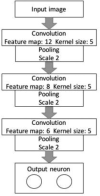
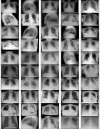
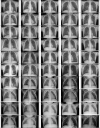










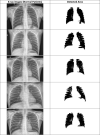
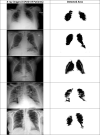

Similar articles
-
DON: Deep Learning and Optimization-Based Framework for Detection of Novel Coronavirus Disease Using X-ray Images.Interdiscip Sci. 2021 Jun;13(2):260-272. doi: 10.1007/s12539-021-00418-7. Epub 2021 Feb 15. Interdiscip Sci. 2021. PMID: 33587262 Free PMC article.
-
Computer aid screening of COVID-19 using X-ray and CT scan images: An inner comparison.J Xray Sci Technol. 2021;29(2):197-210. doi: 10.3233/XST-200784. J Xray Sci Technol. 2021. PMID: 33492267
-
An Efficient Method for Coronavirus Detection Through X-rays Using Deep Neural Network.Curr Med Imaging. 2022;18(6):587-592. doi: 10.2174/1573405617999210112193220. Curr Med Imaging. 2022. PMID: 33438544
-
COVID-19 diagnosis using state-of-the-art CNN architecture features and Bayesian Optimization.Comput Biol Med. 2022 Mar;142:105244. doi: 10.1016/j.compbiomed.2022.105244. Epub 2022 Jan 20. Comput Biol Med. 2022. PMID: 35077936 Free PMC article. Review.
-
Detection of COVID-19 from CT and Chest X-ray Images Using Deep Learning Models.Ann Biomed Eng. 2022 Jul;50(7):825-835. doi: 10.1007/s10439-022-02958-5. Epub 2022 Apr 12. Ann Biomed Eng. 2022. PMID: 35415768 Free PMC article. Review.
Cited by
-
Feasibility study of multi-site split learning for privacy-preserving medical systems under data imbalance constraints in COVID-19, X-ray, and cholesterol dataset.Sci Rep. 2022 Jan 27;12(1):1534. doi: 10.1038/s41598-022-05615-y. Sci Rep. 2022. PMID: 35087165 Free PMC article.
-
A Comprehensive Review of Machine Learning Used to Combat COVID-19.Diagnostics (Basel). 2022 Jul 31;12(8):1853. doi: 10.3390/diagnostics12081853. Diagnostics (Basel). 2022. PMID: 36010204 Free PMC article. Review.
-
The Application of Convolutional Neural Network Model in Diagnosis and Nursing of MR Imaging in Alzheimer's Disease.Interdiscip Sci. 2022 Mar;14(1):34-44. doi: 10.1007/s12539-021-00450-7. Epub 2021 Jul 5. Interdiscip Sci. 2022. PMID: 34224083
-
Classification of COVID-19 electrocardiograms by using hexaxial feature mapping and deep learning.BMC Med Inform Decis Mak. 2021 May 25;21(1):170. doi: 10.1186/s12911-021-01521-x. BMC Med Inform Decis Mak. 2021. PMID: 34034715 Free PMC article.
-
Study of Different Deep Learning Methods for Coronavirus (COVID-19) Pandemic: Taxonomy, Survey and Insights.Sensors (Basel). 2022 Feb 28;22(5):1890. doi: 10.3390/s22051890. Sensors (Basel). 2022. PMID: 35271037 Free PMC article. Review.
References
-
- Celik, Y., Talo, M., Yildirim, O., Karabatak, M., & Acharya, U. R. (2020). Automated invasive ductal carcinoma detection based using deep transfer learning with whole-slide images. Pattern Recognition Letters, 133, 232–239. 10.1016/j.patrec.2020.03.011 - DOI
-
- Dhiman, G. (2019). ESA: A hybrid bio-inspired metaheuristic optimization approach for engineering problems. Engineering with Computers, 1–31.
-
- Dhiman, G. (2020). MOSHEPO: A hybrid multi-objective approach to solve economic load dispatch and micro grid problems. Applied Intelligence, 50(1), 119–137. 10.1007/s10489-019-01522-4 - DOI
MeSH terms
LinkOut - more resources
Full Text Sources
Other Literature Sources
Medical
